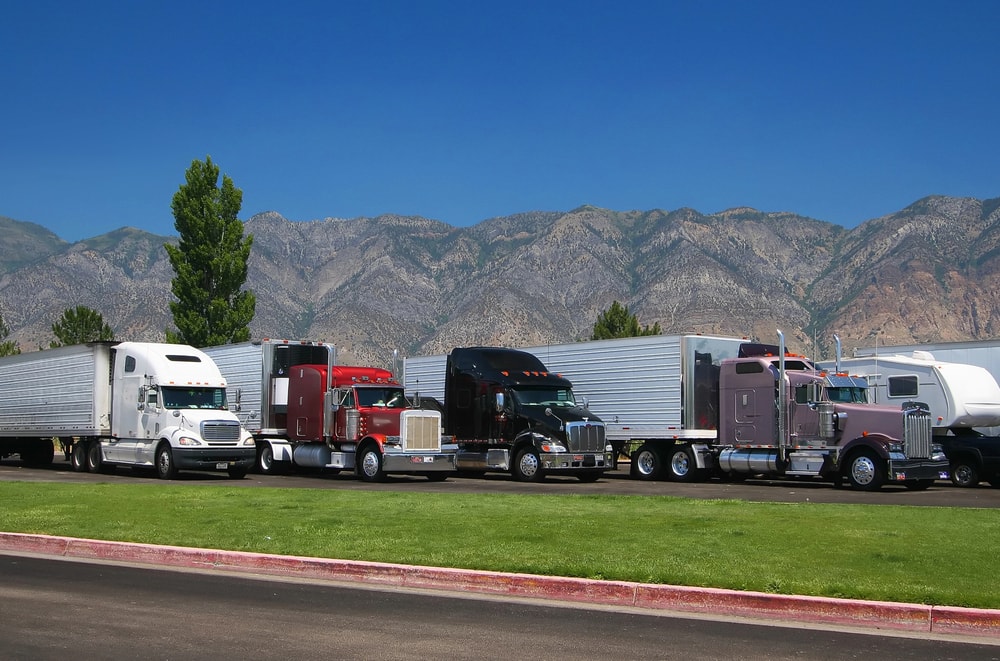Introduction
Have you ever had your driver pull into a busy warehouse ready to offload the freight, only to find out the warehouse personnel is telling him that it will be unloaded by a lumper service, and there will be a fee involved for this service? This happens quite often in the trucking business; most distribution centers and warehouses will retain the services of a lumper and charge a fee for the loading and unloading of freight. These fees are charged by third-party workers, often referred to as lumpers, that a company hires to conduct the tedious work of loading or unloading freight from trucks.
Lumper fees have an extensive influence on the supply chain and, as such, affect shippers, receivers, trucking companies, and drivers. The lumper fees are very important for trucking companies as they impact their costs and operational efficiency. These are fees that shippers and receivers should be aware of for appropriate accounting in logistics and budgeting. Knowing how the lumper fee works makes it easier for all parties to handle their responsibilities in a better way so that operations go smoothly with less disturbance in the supply line.
What is a Lumper Fee?
A lumper fee is essentially a charge levied by third-party workers, or lumpers, who load and offload freight at warehouses, distribution centers, and any other logistics hub. In this way, it is part of the structure of fees in the trucking industry and facilitates the flow of goods. Usually, lumpers are hired to do intensive work that the truck driver would do personally, like switching heavy pallets around and organizing shipments in the truck.
Lumper fees are needed to hasten the loading or offloading process so that no trucker wastes time and is available for driving by tight schedules. The system saves not just time but also keeps drivers from getting needless injuries and fatigue. Any person dealing with transport—truck driver, shipper, receiver, or trucking company—should know what a lumper fee is and where it stands in the greater logistics scheme.
The Role of Lumper Services
Lumper workers are specialized laborers who assist in loading and unloading freight. They physically handle cargo, ensuring that it is sorted, stacked, and secured properly for transit. These tasks are extremely physically demanding, with a large amount of lost time, so lumper services are very important in speeding up turnarounds at loading docks. With the use of lumpers, warehouses, and distribution centers can work much more effectively and reduce delays to allow fitting in as much productivity as possible.
Third-party lumper services include on-demand external agencies that provide such specialized workers. These services present many advantages, such as flexibility in staffing for an experienced workforce, managing peak workloads without the need to put more pressure on the regular workforce, making things smooth, lightening the burden on truck drivers, and sustaining the integrity of the supply chain. This is why the roles of lumper services and their workers are vital in optimizing logistics to ensure they run smoothly across the movement of goods.

The Process of Handling Lumper Fees
The handling of lumper fees starts when a truck driver arrives at a warehouse. On arrival, the driver checks in with the warehouse staff who generally inform him that a lumper service will be used in unloading the cargo. After checking in, the driver is normally sent to a specific dock where lumper workers take over the unloading of the cargo. These workers efficiently and safely remove cargo from the truck, ensuring that it is correctly sorted and placed within a warehouse.
Unloading is a multi-step process. First, the lumper workers overview the cargo and assess how it should be best offloaded. They use equipment such as forklifts and pallet jacks to handle freight, which quickens the process and minimizes the risk of damage. Upon completion of discharge, a lumper receipt is given to the driver, outlining the service and the fee for that service. Lumper services are usually paid for at the time the service is provided in cash or by special industry checks called lumper checks. These checks are normally forwarded by the trucking company to enable payment for the lumper services, so that payment is not made from the driver’s pocket.
Lumper Fees Costs
Lumper fees can run to all kinds of differentials based on what cargo is being offloaded, how many, which warehouse or distribution center, and regional differences. Normal lumper fees would range anywhere from $50 to $300 or more, with the typical cost being around $150–$200. This should be used to allow the driver, owner-operator, or trucking company to build that into the cost structure as a possible additional expense incurred during delivery.
Added to this cost are special handling requirements, such as the unloading of hazardous materials or unusually heavy or bulky items. Most trucking companies have policies in place regarding the reimbursement for lumper fees. Drivers will submit the lumper receipt to their company, which then processes the reimbursement so that drivers are not left bearing the cost. Understanding the range that lumper fees can be, coupled with any extra costs and how they will be reimbursed, is what enables drivers and companies to plan well for these expenses and keep their operations running smoothly.

Effect on the Trucking Industry
The services of lumpers have a drastic effect on the trucking industry because of one simple thing: time and efficiency. Using lumper workers can save truck drivers valuable time at the loading docks, letting them return to the road as soon as possible. Time is essential in any industry, but particularly in this one; a delay in setting a delivery could mean delayed money from the profit. Lumper services expedite the process of cargo unloading and deal with it effectively to the benefit of all players along the supply chain.
On the cost front, lumper services can be relatively cheap in comparison to having drivers unload cargo from their trucks. The service does come at a cost, but this is offset by the time savings and reduced physical labor for the drivers themselves. Drivers are now freed to do what they do best—drive, rather than indulge in time-consuming, physically tiring, and sometimes hazardous unloading tasks. By reducing the safety risks involved in manual labor, like injuries and fatigue, lumpers make sure that the driver is fit and healthy to drive. This ensures much more than a safety factor; it also maintains productivity and minimizes lost time for trucking companies.
Industry Specifics
Food goods are highly perishable and need to be processed within rigid time limits; hence, the food industry happens to be one of the largest primary users of lumper services. Food warehouses and distribution centers have to be unloaded and palletized for timely stock turnover to retain their salable freshness and quality of goods. Lumper services are highly availed in several other types of industries, be it retail or manufacturing, depending on greater weights and volumes of high-volume or heavy cargo. These industries derive benefits from the specialized skills and efficiency that lumpers have.
The type of commodity being transported can, in most instances, determine the need for lumper services. A good example here is the fact that the nature of the goods being ferried is either fragile or hazardous and requires keen handling is one such type of good that trained lumper workers are in a position to handle with care and ensure that they are operated without damage. Similarly, bulky or heavy cargo that is difficult for drivers to handle themselves creates the need for lumpers. Being aware of exactly what kind of cargo necessitates the use of lumpers helps trucking firms determine when to use lumper services to make the operation efficient and safely done according to certain standards.

Challenges
Lumper services and fees have sometimes been used as a negative term in the trucking industry. Some drivers and companies have come to frown upon the fees as most of them are viewed as an additional cost with no value that can be matched with it. The perception is further put into the limelight by concerns over transparency and inconsistency of the fees between locations and service providers. Also, some drivers believe that the need to resort to lumpers is somewhat of an indictment on a driver’s ability to manage his own load, given both affect his sense of professionalism and autonomy.
The most prevalent issues related to lumper services are delays and cash payments. Delays can be experienced waiting for the availability of lumper workers, thus interfering with tight delivery schedules and translating into lost time on the road. In addition to this is the requirement for cash payments, where drivers have to be prepared to have enough cash on hand to pay these fees. This can be very inconvenient in two cases: during a long haul or when some unknown fees suddenly crop up. These issues underline the need for improved systems and best practices set out to make the process easier and to ameliorate these typical pain points.
Best Practices for Handling Lumper Fees
The key to dealing effectively with lumper fees is preparation on the part of the drivers. Proper documentation and receipts go a long way toward reimbursement and record-keeping. For every lumper, drivers ought to obtain a detailed lumper receipt, which is always evidence of payment and may help in reissuing the drivers’ money back through their trucking companies. Also, with a clear understanding of exactly how much should be expected at different locations, drivers would be better placed to plan and not be put off by any unexpected fees.
Efficient management of lumper fees requires clear communication among all parties concerned, like shippers, receivers, and drivers. This sets expectations for and confers on any potential fees before getting into the warehouse, thereby eliminating miscommunication and delays. Drivers should also communicate with their back-office support to ensure that all payments and reimbursements are smoothly handled. It is also paramount to provide back-office support for lumper fees, processing payments, handling the resulting receipts, and interfacing with brokers, and other participants in the transaction chain. With these best practices, drivers and trucking companies can enable themselves through the maze of lumper fees and maintain efficient operations.

Conclusion
Lumper fees are part and parcel of trucking that help maintain efficiency in loading and offloading, thus keeping the supply chain running. Drivers, shippers, and trucking companies need to understand what a lumper fee is, how to handle it, and its impact on time, cost, and labor in order to ensure better handling of their operations. Understanding the role of lumper services, especially in food and retail, and knowing the associated challenges and best practices with these fees will ultimately lead to a much more streamlined approach toward their logistics.
We want to empower our clients by providing them with knowledge about lumper fees and their impacts on the trucking industry. Sharing your personal experience or even useful tips regarding how to deal with lumper fees can benefit the community in understanding them much better and learning how to overcome this very critical part of freight transportation. Your input can be extremely instrumental in driving efficiency, saving costs, and increasing the overall success rate of the industry.




